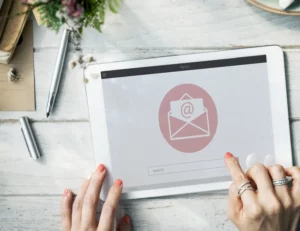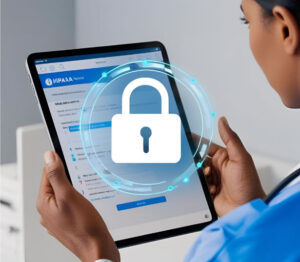In our increasingly digital world, email remains one of the most prevalent forms of communication, used daily for both personal and professional purposes, as well as for organizational purposes. However, with the sensitive nature of the information exchanged, security concerns have surged. Email encryption is a critical technology that safeguards your messages, ensuring that only authorized recipients can read their contents. It effectively turns regular emails into secure, unreadable data during transmission and storage, vastly reducing the risk of interception, hacking, or unauthorized access.
The importance of encryption cannot be overstated. Whether you’re sharing confidential business plans, personal health data, or legal documents, protecting these communications from prying eyes is essential for maintaining privacy, complying with legal standards, and preventing cyber threats. Proper encryption helps preserve trust and integrity in digital interactions, safeguarding both individual privacy and organizational reputation.
Understanding Email Encryption
What is Email Encryption? Email encryption is the process of converting normal, readable email content into a coded format that can only be deciphered with a special decryption key. Think of it as sending a message inside a locked safe—only someone with the right combination or key can open it and view the original message.
How Does Email Encryption Work? At its core, email encryption relies on cryptography, which utilizes algorithms to encrypt and decrypt information. When you send an encrypted email, your email client encrypts the message using either the recipient’s public key or a shared secret, depending on the encryption method. The recipient then decrypts the message with their private key or shared secret. This process ensures confidentiality and prevents anyone else from reading the message if intercepted. Additionally, digital signatures can be added to verify the sender’s identity and ensure message integrity.
Types of Email Encryption: PGP, S/MIME, and Others
- PGP (Pretty Good Privacy): An open-source protocol that offers strong, user-managed encryption via a web of trust system. It’s flexible and popular among tech-savvy users.
- S/MIME (Secure/Multipurpose Internet Mail Extensions): A widely adopted standard integrated into many email clients that uses certificates issued by trusted Certificate Authorities (CAs). It provides both encryption and digital signing.
- Others: Emerging methods include end-to-end encrypted email services like ProtonMail, which encrypt messages automatically, and newer standards that adapt to evolving security needs.
The Importance of Email Encryption
Protecting Sensitive Information: Personal and Business. Encrypting emails ensures that private or sensitive information—such as health records, financial data, legal documents, or proprietary business strategies—remains confidential and secure. It prevents unauthorized third parties, including cybercriminals and malicious insiders, from accessing or reading critical data, thereby safeguarding personal privacy and corporate secrets.
Compliance and Legal Requirements: Many industries are bound by regulations that require the secure handling of data, including HIPAA for healthcare, GDPR for data privacy in the EU, and PCI DSS for payment card security. Encryption helps organizations meet these mandates, eliminating legal risks, fines, or penalties associated with data breaches or non-compliance.
Preventing Data Breaches and Cyber Threats. Cyberattacks targeting email communications are increasingly common. Encryption serves as a vital line of defense—reducing the risk of data leaks during transmission or on compromised servers. It also helps prevent impersonation and phishing attacks by securing message authenticity via digital signatures, thereby protecting both individuals and organizations from cyber threats.
How Can Email Encryption Benefit You?
For Individuals: Privacy and Security Online Email encryption provides personal users with a powerful tool to safeguard their private conversations and sensitive information. Whether sharing personal health details, financial information, or sensitive family matters, encryption ensures that only intended recipients can access the message content. This layer of security is especially vital when using public or unsecured Wi-Fi networks, as it protects your emails from potential eavesdroppers and hackers.
For Businesses: Protecting Corporate Data and Intellectual Property Organizations routinely exchange confidential data—including strategic plans, client information, and proprietary technology. Unencrypted emails risk exposure to cybercriminals, insider threats, and accidental leaks. Implementing email encryption minimizes these risks, helps meet legal compliance standards like HIPAA or GDPR, and safeguards intellectual property, competitive advantages, and customer trust. It’s a key element of an effective cybersecurity strategy.
Boosting Customer Trust and Confidence. In a digital economy, customers increasingly demand assurance that their personal data is protected. Transparent use of encryption reassures clients that their private information—such as payment details or health records—is handled securely and confidentially. This trust enhances brand reputation, fosters customer loyalty, and provides a competitive advantage, particularly for service providers in sensitive sectors such as healthcare, finance, or e-commerce.
Implementing Email Encryption
Email Encryption Solutions: A Comparative Overview
- Built-in Client Features: Many email services like Gmail (via Confidential Mode), Outlook (with S/MIME), and Apple Mail support encryption options directly within their interfaces. These solutions often support TLS and, in some cases, S/MIME certificates.
- Third-Party Encryption Tools: Applications like ProtonMail, Tutanota, and encryption plugins such as Mailvelope or Virtru enable end-to-end encryption with seamless integration or dedicated platforms. They often offer easier user experiences or stronger security guarantees.
- Enterprise Solutions: Large organizations may deploy PKI-based encryption systems, offering centralized management, access controls, and compliance tracking.
Setting Up Email Encryption: Step-by-Step Guide for Individuals and Businesses
- Select Your Solution: Decide whether to use built-in platform features, third-party tools, or enterprise PKI systems based on your needs.
- Obtain Necessary Credentials: For S/MIME, acquire a digital certificate from a trusted CA; for PGP, generate key pairs.
- Configure Your Email Client: Install certificates, enable encryption features, and set preferences for signing and encrypting emails.
- Share Public Keys/Certificates: Exchange necessary keys or certificates securely with contacts.
- Start Sending Encrypted Messages: When composing emails, enable encryption and/or signing, then send securely.
Best Practices in Managing Encrypted Email Communication
- Regularly update and renew certificates or key pairs before expiration.
- Maintain secure backups of private keys and certificates.
- Verify recipient encryption capabilities before sending sensitive messages.
- Educate users or staff on encryption procedures and importance.
- Use strong, unique passwords and multi-factor authentication for account access.
Potential Challenges and How to Overcome Them
Common Encryption Challenges
- Compatibility Issues: Different email clients or platforms may have varying support for encryption standards, leading to difficulties in encrypting or decrypting messages across systems.
- User Education: Not all users are familiar with managing keys, certificates, or encryption settings, increasing the risk of mistakes or non-compliance.
Overcoming Technical Hurdles
- Choose encryption providers that support universal standards like S/MIME and PGP for broader compatibility.
- Use user-friendly encryption tools with intuitive interfaces to reduce errors.
- Provide clear, step-by-step training and documentation for users.
- Conduct periodic tests and audits to ensure encryption systems work smoothly.
Ensuring Accessibility and Ease of Use for Recipients
- Share public keys or certificates securely and verify identity through trusted channels.
- Use encryption solutions with automatic key discovery and management features.
- Where possible, adopt solutions that do not impose complex procedures on recipients, such as encrypted web-based portals or secure messaging platforms.
The Future of Email Encryption
Emerging Technologies and Trends: Quantum-Safe Encryption. As the world anticipates the advent of quantum computing, traditional encryption algorithms—such as RSA and ECC—face potential vulnerabilities. This has accelerated research into quantum-resistant (or post-quantum) encryption algorithms that can withstand quantum attacks. In the coming years, we can expect email encryption standards to evolve, integrating these quantum-safe algorithms into protocols like S/MIME and PGP, thereby ensuring long-term security even against unprecedented computational power.
The Role of Email Encryption in the Future of Internet Security. Email remains a primary vector for cyber threats, including phishing, malware, and data breaches. As threats become more sophisticated, email encryption will become a central component of comprehensive cybersecurity strategies. Future developments aim for automated, seamless, end-to-end encryption that works transparently for users and is embedded into the core of email platforms, making secure communication accessible without technical hurdles. Privacy-enhancing technologies, such as decentralized PKI, blockchain validation, and AI-driven threat detection, will bolster the resilience of encrypted emails.
Frequently Asked Questions
What if I lose my encryption key?
Losing your private encryption key can be serious since it typically means losing access to encrypted messages and digital signatures. To prevent this, always back up your keys securely in offline, encrypted storage. If you lose your key, you may need to revoke the old one and generate a new one—though this may complicate ongoing communications, especially if others rely on your old key.
Can encrypted emails be hacked?
While encryption significantly reduces the risk, no system is entirely unbreakable. Strong, up-to-date encryption algorithms are highly resistant to current threats, but vulnerabilities can exist if implementation is flawed or weak keys are used. Additionally, attackers may target endpoints or attempt social engineering rather than the encryption itself. Proper key management and security practices are essential for maximum protection.
Is email encryption expensive or challenging to implement?
The cost and difficulty depend on the chosen solutions. Many modern, user-friendly tools provide free or affordable options that are easy to deploy with minimal technical expertise. For organizations, enterprise-grade solutions may involve licensing costs and administrative setup, but the security benefits far outweigh the investment. With the right tools and guidance, implementing email encryption is more accessible than ever.
Final Thoughts
Securing email communications with encryption offers critical benefits, including protecting sensitive data, ensuring privacy, and maintaining compliance with regulatory standards such as HIPAA and GDPR. Encryption not only safeguards your messages during transit but also helps uphold trust and integrity in digital exchanges. As threats continue to evolve, adopting robust encryption practices is no longer optional; it is an essential component of your cybersecurity strategy.
We encourage you to take action today: review your current email security measures, explore suitable encryption solutions, and implement best practices to safeguard your private information. Every step toward stronger email security helps protect your data, reputation, and peace of mind.
In today’s interconnected world, email encryption is essential for anyone seeking to protect their digital correspondence. Whether you are an individual, a business owner, or part of a large organization, understanding and applying encryption techniques protects you from cyber threats and legal risks.
Don’t wait until a breach occurs—proactively enhance your email security today. Start by evaluating available encryption tools, consult with cybersecurity experts if needed, and make encryption a standard part of your communication protocol. The right investment today can save you from costly data breaches tomorrow.
Explore further resources, stay informed about emerging encryption technologies, and take concrete steps to make your email communications private and secure.






